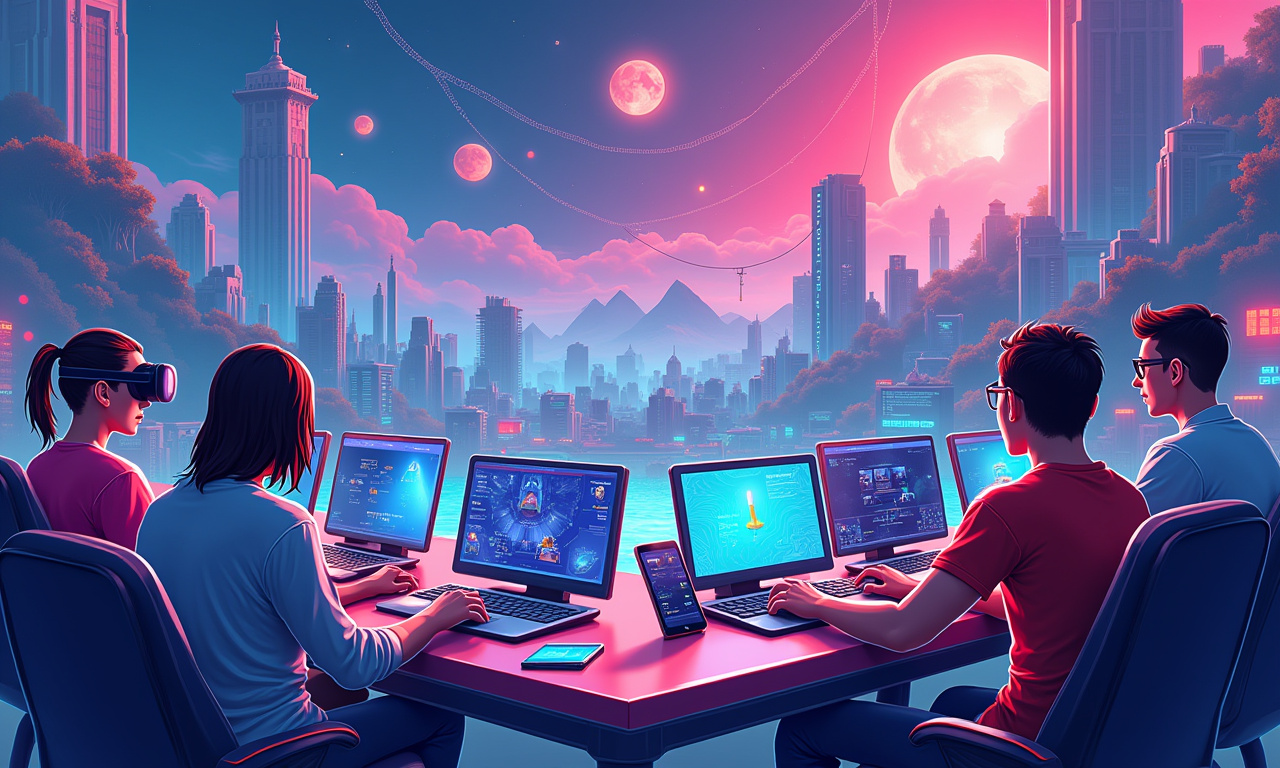Blockchain games are ever more pronounced for their decentralization aspect, but what does that even mean, and how is it done? Despite the numerous games that boast about their decentralization and self-sovereign nature, most games upon inspection are semi-decentralized at best. We believe true decentralization starts with three key pillars, each one being a pillar, or step, toward more player autonomy and longer game life. Recognizing these stages is key for developers and players alike as they explore the rapidly changing world of blockchain gaming.
NFT Decentralization and Asset Ownership
The first layer of this decentralization happens at the asset level – via Non-Fungible Tokens (NFTs). This NFT decentralization gives players true ownership over in-game items, characters, and land. Unlike in traditional games, where assets are always subject to developers’ servers and terms of service, blockchain games put the players back in control by allowing them to own their digital assets. Asset ownership is perhaps the most important aspect of decentralization. It truly empowers players by letting them confidently trade, sell, and utilize their assets across different platforms.
In the larger decentralization movement, asset ownership through NFT decentralization has been proven to be a powerful tool. Players are able to truly own, manage, and control their assets which adds more meaningful value to the gaming experience.
Stages of Decentralization
Decentralization in practice can be thought of in different levels or phases, based on the amount of power handed over to the community. Stage 1 Reality Stage 1 is defined by centralized control – developers still control assets, game logic, and governance. During this first phase, the game feels like any old online game. This year, it has the thrilling, new, perhaps game-changing inclusion of tradable NFTs!
Games such as Skyweaver and Aurory are leading the charge of Stage 2 decentralization. These games start to codify community engagement into the decision making process, usually by having a vote take place on proposed changes or updates. Even though developers continue to have a lot of power, players receive a seat at the table to help guide the course of the game.
Treasure DAO exemplifies Stage 3 of decentralization. In this advanced stage, the community, organized as a Decentralized Autonomous Organization (DAO), wields considerable power over the game's development, resource allocation, and overall governance.
The Power of DAO Governance
In many ways DAO Governance is the most potent weapon in our decentralization arsenal. Thanks to DAOs, players can collectively own and democratically decide the direction of their game’s future. This might mean voting on new features, balancing gameplay mechanics, or even deciding the game’s narrative arc.
By decentralizing authority to the community, DAO governance creates a deeper sense of ownership and investment in the game among players. The resulting participatory approach often delivers a more engaged and loyal player base.
Building for the Long Term
If you build your game around decentralization, you can potentially extend the life of your game to 10 years or more. By embracing decentralization as a core pillar, developers can create games that more readily withstand duplication and imitation. The game’s fate depends on more than one person’s judgement. That’s up to the collaborative determination of the whole community. This kind of business resilience will be key to ensuring long-term success in the quickly-changing gaming sector.




